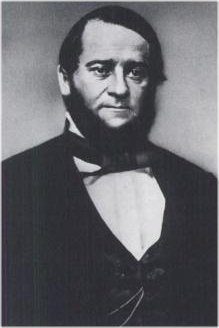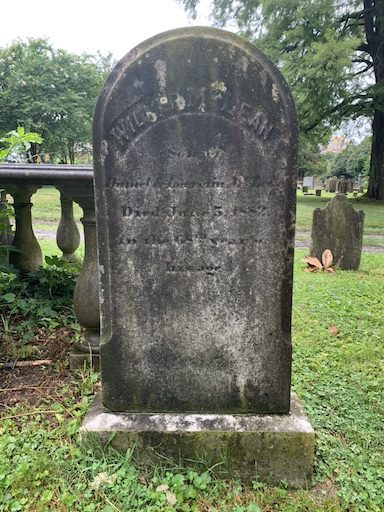Wilmer McLean (May 3, 1814 – June 5, 1882)

Introduction
The life and homes of Wilmer McLean are deeply intertwined with the American Civil War’s pivotal moments. From the first shots at Yorkshire to the final surrender at Appomattox Courthouse, McLean’s residences bore witness to the war’s profound impact on the nation.
The McLean Legacy: Foundations in Alexandria
Wilmer McLean was born to Daniel McLean, who played a pivotal role in establishing St. Paul’s Church Episcopal Church in Alexandria, Virginia. The McLean family’s resting place in St. Paul’s Cemetery is a testament to their enduring legacy in the region.
A Union of Families: The McLean-Mason Marriage
In 1853, Wilmer McLean united in matrimony with Virginia Hooe Mason, a widow previously married to John Seddon Mason. The expansive 1200-acre Yorkshire farm near Bull Run in Prince William County came with Virginia’s dowry. This farm set the stage for numerous significant events as the couple raised their blended family.
Yorkshire: Ground Zero of Battle
The First Battle of Bull Run (or First Battle of Manassas) on July 18, 1861, saw Union cannons targeting Yorkshire, then the headquarters for Confederate General Pierre G. T. Beauregard. The cookhouse, serving as a signal station, suffered a direct hit.
Days later, on July 21, the armies clashed again near Manassas. Post-battle, Yorkshire transitioned into a makeshift hospital and prison for captured Union soldiers and spectators, including Congressman Alfred Ely of New York.
Seeking Refuge and Financial Stability
The continuous warfare and destruction at Yorkshire compelled the McLean family to seek sanctuary elsewhere. They chose the village of Appomattox Courthouse, approximately 120 miles away, hoping for peace until the war’s end.
The Surrender: McLean’s Living Room’s Historic Role
On April 9, 1865, Colonel Charles Marshall, an aide to General Robert E. Lee, approached McLean in search of an appropriate location for General Lee to surrender to Union General Ulysses S. Grant. Reluctantly, McLean provided his parlor, which then became the setting for this momentous event, signaling the end of the American Civil War.

The McLean House: From Civil War Relic to National Monument
After Lee’s surrender to Grant at the McLean house, a flurry of souvenir hunting ensued among the Union soldiers and officers. Personal items from the McLean home, including a cherished doll named Lucretia (Lulu) belonging to Virginia McLean, were taken. Notably, General Edward Ord claimed the marble table where Lee had sat, intending to give it to Julia Grant. However, she declined the offer, and the table eventually reached the Chicago History Museum. Meanwhile, the armchair used by General Lee, initially taken by Colonel Edward W. Whitaker, is now displayed in the National Museum of American History.
The significance of the moment was not lost on those present. Despite McLean’s objections, his furniture was quickly claimed as trophies by Union officers who left gold coins in exchange. General Sheridan acquired a side table, Brigadier General Henry Capehart took the chair used by Grant, and Lieutenant Colonel Whitaker secured Lee’s chair. Notably, Sheridan presented the side table to Custer as a gift for his wife, Elizabeth. Furthermore, Elizabeth Custer also received a part of the surrender towel, which had been used earlier that day by a Confederate rider. This towel, initially bought by Captain R. M. Sims in Richmond just before the fall of the Confederate capital, was later cut in half by Whitaker. Whitaker kept one half, while the other was given to Elizabeth Custer, who eventually bequeathed it to the Smithsonian.
The house’s post-war journey is equally intriguing. McLean foreclosed on it in 1867, changing ownership multiple times until Captain Myron Dunlap bought it in 1891. He aimed to display the house at the 1893 Chicago World’s Fair, but financial setbacks led to its dismantling for a proposed D.C. museum. This plan fell through, leaving the house in ruins for years. The National Park Service undertook its restoration in the 1940s, and the restored house was inaugurated in 1950, attended by figures like historian Douglas Southall Freeman, General Ulysses S. Grant III, and Robert E. Lee IV.
Life After the War: McLean’s Return to Alexandria.
Financial hardships soon followed the war, prompting McLean and his family to move to Manassas in 1867. Eventually, they returned to Alexandria. Through his connection with Confederate raider John Mosby, McLean secured a position as a tax collector for the Port of Alexandria, serving from 1876 to 1880.
McLean’s Legacy: A Unique Perspective on the Civil War
After the war, McLean often remarked, “The American Civil War began in my front yard and ended in my parlor.” This statement encapsulates his unique position in the war’s history. McLean passed away on July 5, 1882, leaving a rich legacy. His wife, Virginia, outlived him by 11 years and rests beside him.
Conclusion
Wilmer McLean’s life, homes, and belongings offer a unique lens through which we can view the significant events of the American Civil War. His story is a poignant reminder of the war’s personal and national impacts.

| WILMER McLEAN Son of Daniel & Lucretia McLean Died June 5, 1882 In the 68th year of his age |
Sources of Information
Johns, C. (2001). Wilmer McLean (1814 – 1882) Victim or Scrooge? The Alexandria Chronicle, IX(2). Alexandria Historical Society, Inc.
Hakenson, D. C. (2011). This Forgotten Land Volume II, Biographical Sketches of Confederate Veterans Buried in Alexandria, Virginia. Alexandria, Virginia: Donald Hakenson.
Pippenger, W. E. (2014). Tombstone Inscriptions of Alexandria, Virginia (Vol 5). Heritage Books: Berwyn Heights, MD.
Rubenstein, H. R. (2015, April 3). The Gentleman’s Agreement That Ended the Civil War. What It Means to Be American. Retrieved from https://www.whatitmeanstobeamerican.org/artifacts/the-gentlemans-agreement-that-ended-the-civil-war/
National Park Service. (2022). Appomattox Court House National Historical Park. https://www.nps.gov/apco/index.htm